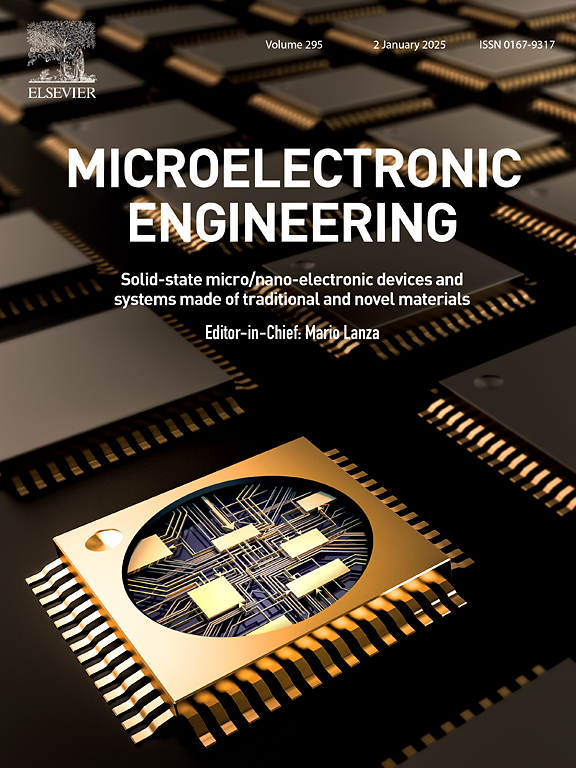On the feature accuracy of deep learning mask topography effect models
IF 3.1
4区 工程技术
Q2 ENGINEERING, ELECTRICAL & ELECTRONIC
引用次数: 0
Abstract
A deep-learning-based lithography model using a generative neural network (GAN) approach is developed and assessed for its ability to predict aerial images at different resist heights. The performance of the GAN approach is evaluated by analyzing deviations between model-generated aerial images and golden images, as well as differences in critical dimension (CD) values. Additionally, error analysis is conducted based on the feature distribution of each photomask. Selected patterns and their aerial images are compared both qualitatively to assess local errors and quantitatively through root-mean-square (RMS) errors to evaluate global accuracy. Error analysis reveals the features produced by the deep learning model leading to the highest deviation from the rigorous model results, and the error is decomposed into the error contributions of underpredicted and overpredicted features. An array of aerial images for selected resist heights produced by the deep learning model is assessed, revealing increasing errors with increasing resist heights. The limitations of applying deep learning techniques in computational lithography are illustrated by comparing a target pattern with and without optical proximity correction (OPC) features.

深度学习掩膜地形效应模型的特征精度研究
利用生成式神经网络(GAN)方法开发了基于深度学习的光刻模型,并评估了其预测不同抗蚀高度航拍图像的能力。通过分析模型生成的航空图像与黄金图像之间的偏差以及关键维数(CD)值的差异,评估了GAN方法的性能。并根据各掩模的特征分布进行误差分析。对选定的模式及其航空图像进行定性比较,以评估局部误差,并通过均方根误差(RMS)定量评估全球精度。误差分析揭示了深度学习模型产生的导致与严格模型结果偏差最大的特征,并将误差分解为预测不足和预测过高特征的误差贡献。对深度学习模型产生的选定抗阻高度的航拍图像阵列进行了评估,揭示了随着抗阻高度的增加,误差也在增加。通过比较具有和不具有光学接近校正(OPC)特征的目标图案,说明了在计算光刻中应用深度学习技术的局限性。
本文章由计算机程序翻译,如有差异,请以英文原文为准。
求助全文
约1分钟内获得全文
求助全文
来源期刊

Microelectronic Engineering
工程技术-工程:电子与电气
CiteScore
5.30
自引率
4.30%
发文量
131
审稿时长
29 days
期刊介绍:
Microelectronic Engineering is the premier nanoprocessing, and nanotechnology journal focusing on fabrication of electronic, photonic, bioelectronic, electromechanic and fluidic devices and systems, and their applications in the broad areas of electronics, photonics, energy, life sciences, and environment. It covers also the expanding interdisciplinary field of "more than Moore" and "beyond Moore" integrated nanoelectronics / photonics and micro-/nano-/bio-systems. Through its unique mixture of peer-reviewed articles, reviews, accelerated publications, short and Technical notes, and the latest research news on key developments, Microelectronic Engineering provides comprehensive coverage of this exciting, interdisciplinary and dynamic new field for researchers in academia and professionals in industry.
 求助内容:
求助内容: 应助结果提醒方式:
应助结果提醒方式:


